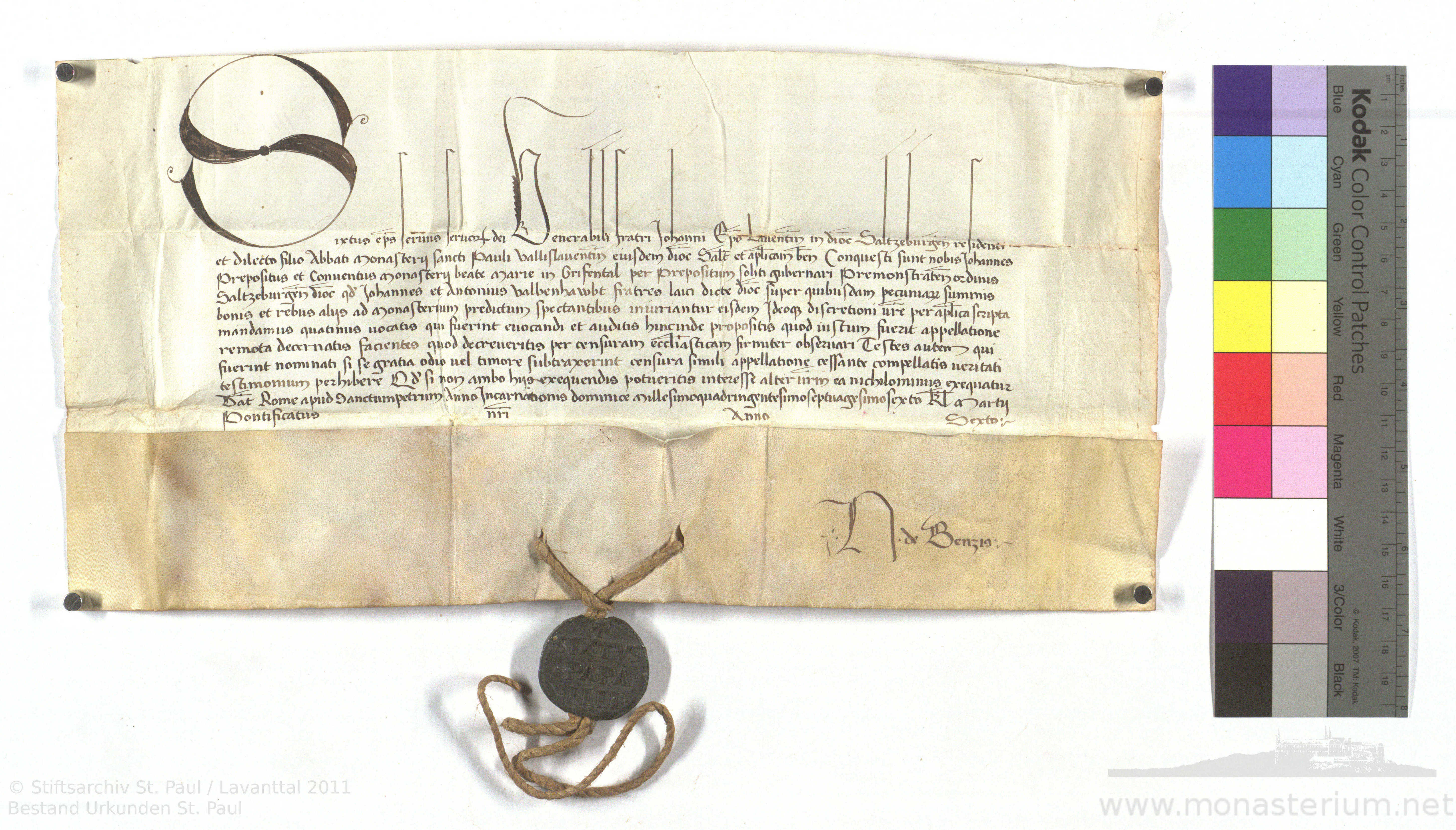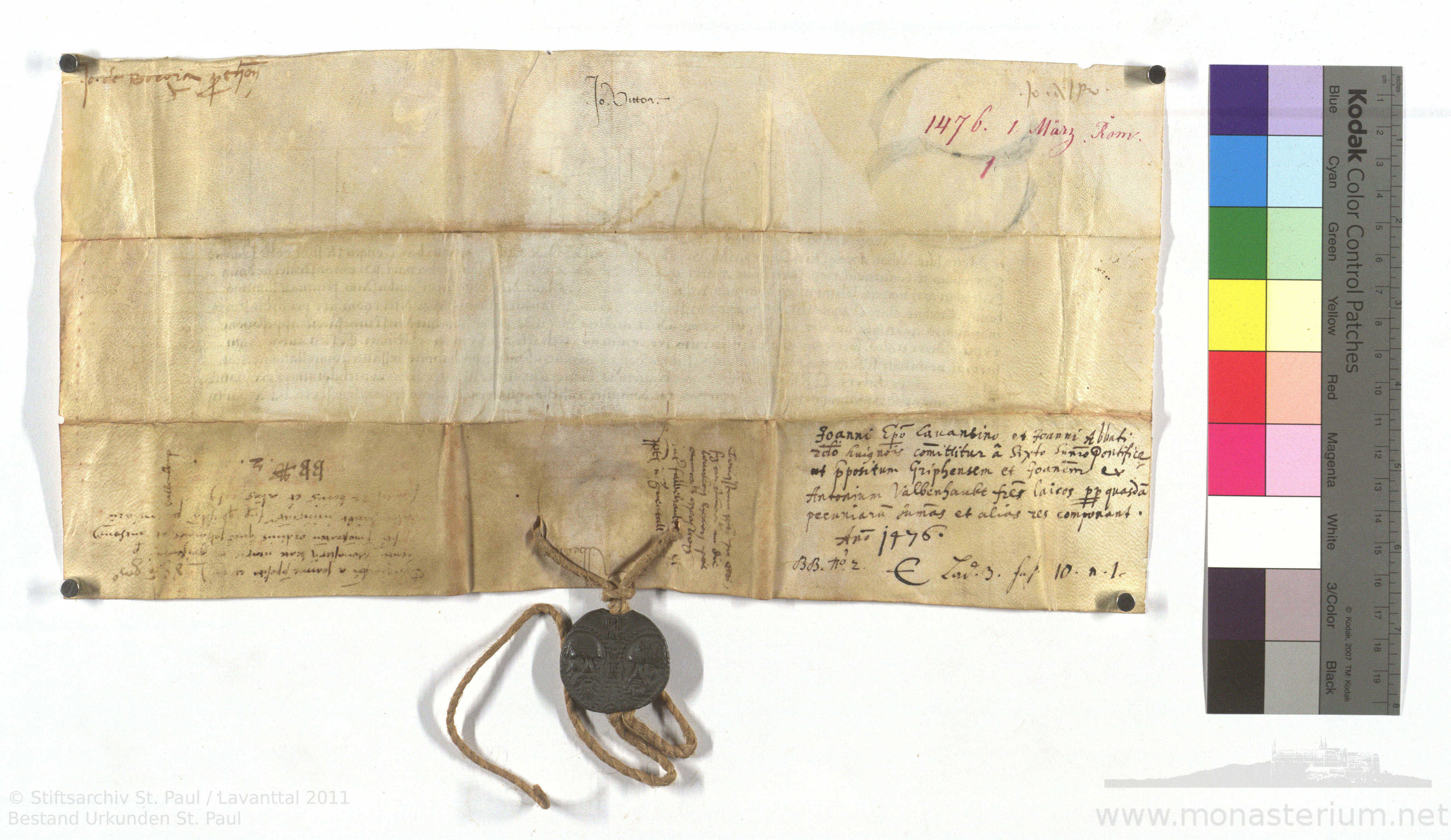Charter: Urkunden St. Paul 569
Signature: 569
Add bookmark
Edit charter (old editor)
1476 März 1, Rom
Papst Sixtus IV. beauftragt den Bischof Johann von Lavant und den Abt von St. Paul, die Klage des Propstes Johann<sup>1</sup> und des Conventes in Grifental, ,quod Johannes et Antonius Valbenhawbt<sup>2</sup> fratres laici super quibusdam pecuniarum summis, bonis et rebus aliis ad monasterium predictum spectantibus iniuriantur eisdem‘, zu untersuchen und zu entscheiden. – Source Regest:
SCHROLL, Urkundenbuch St. Paul (= FRA II/39, Wien 1876) S. 465, Nr. 591
SCHROLL, Urkundenbuch St. Paul (= FRA II/39, Wien 1876) S. 465, Nr. 591
Current repository:
Stiftsarchiv St. Paul (http://www.stift-stpaul.at)
Stiftsarchiv St. Paul (http://www.stift-stpaul.at)
Bulle
Material: Pergament


Original dating clause: Kal. Martii
Language:
Notes:
<sup>1</sup> Ein Propst Johann von Grifen erscheint in Urkunden von 1452 bis 1496 (Grifner Copialbueh aus dem XV. Säculum im kämt. Geschichtvereine). Valvasor (Topographia Archiduc. Karinthiae pag. 71) führt als erwählt 1430 Propst Johann III., 1464 Propst Oswald II., und 1490 Propst Johann IV. an. Im Copialbuche kommt um diese Zeit kein Propst Oswald vor, während 1458 den 14. Mai fol. 70 Nr. 77, und 1465 den 24. April fol. 50 Nr. 57 Propst Johann erscheint. Ob in diesem Zwischenräume ein Propst Oswald regierte oder in der oben angegebenen Zeit bloss ein oder zwei Pröpste des Namens Johann regierten, kann aus den vorhandenen Urkunden nicht entschieden werden.
<sup>2</sup> Die Falbenhaupt kommen schon im XIV. Jahrhunderte unter dem kärnt. Adel vor.
Places
- Rom
Sankt Paul im Lavanttal, Stiftsarchiv, Urkunden St. Paul 569, in: Monasterium.net, URL <https://www.monasterium.net/mom/AT-StiAStP/UK/151/charter>, accessed 2025-04-07+02:00
You are copying a text frominto your own collection. Please be aware that reusing it might infringe intellectural property rights, so please check individual licences and cite the source of your information when you publish your data
The Charter already exists in the choosen Collection
Please wait copying Charter, dialog will close at success